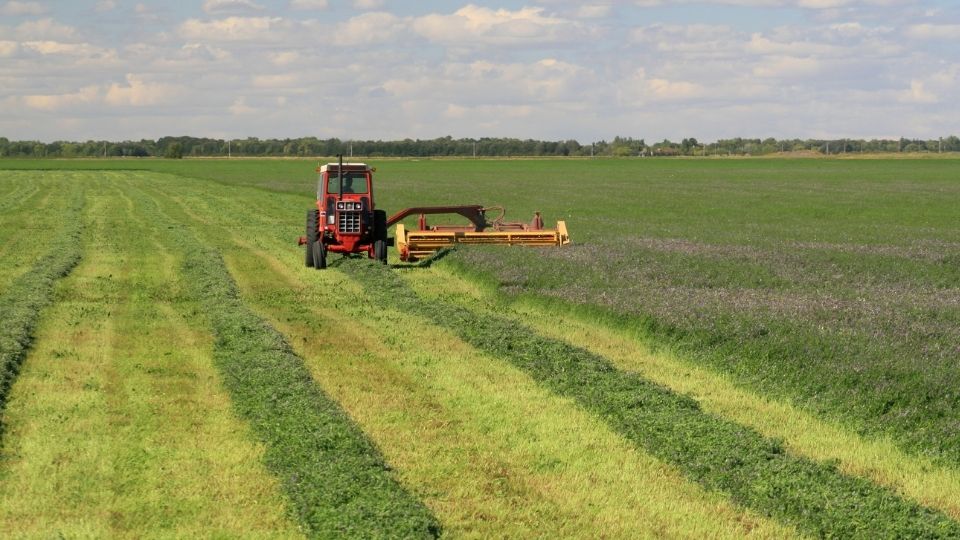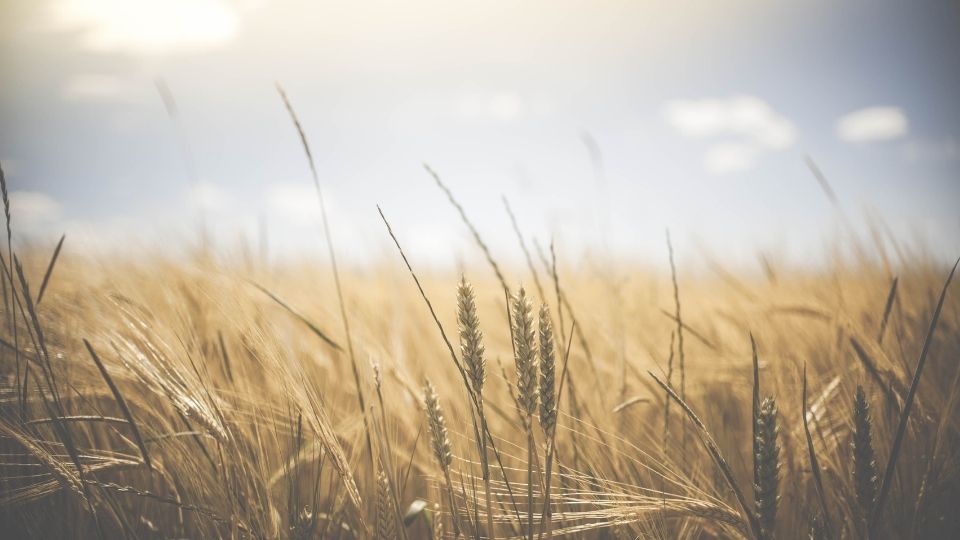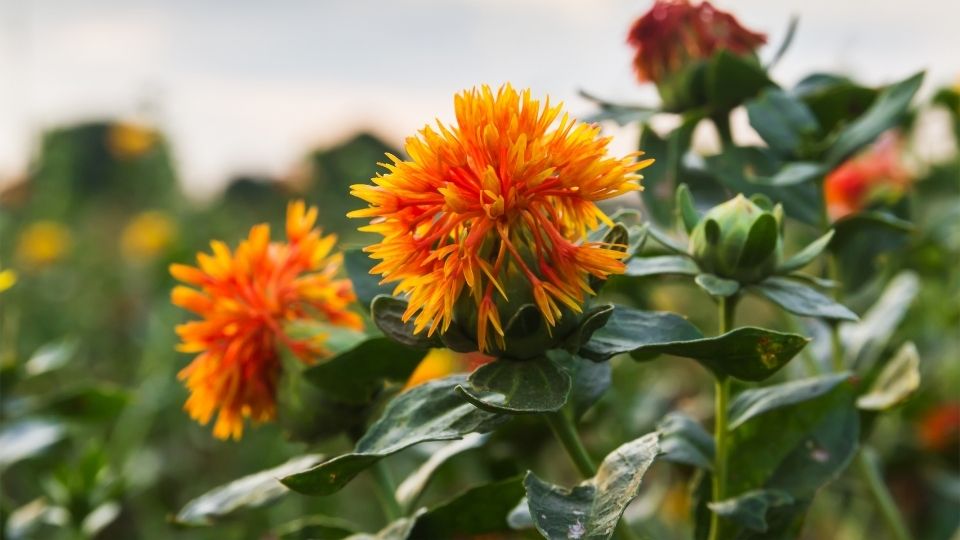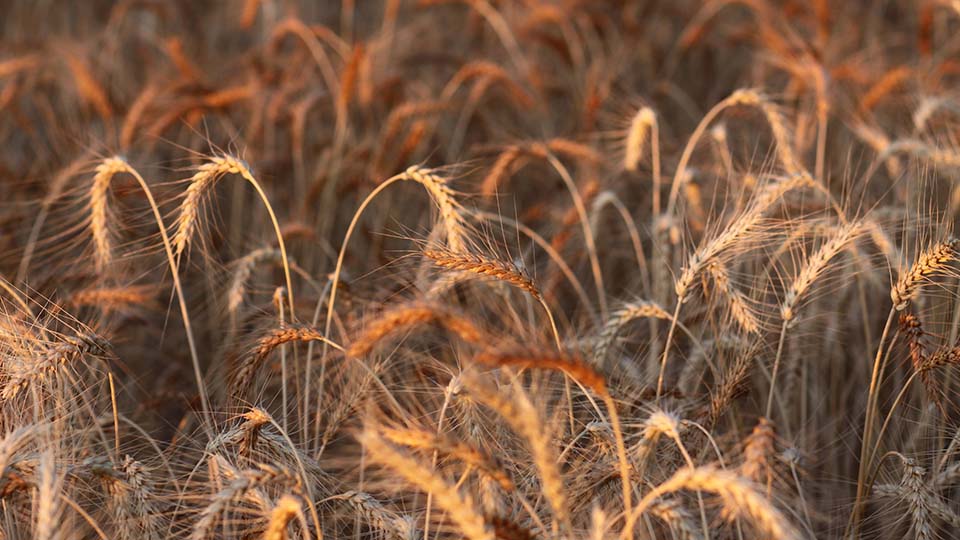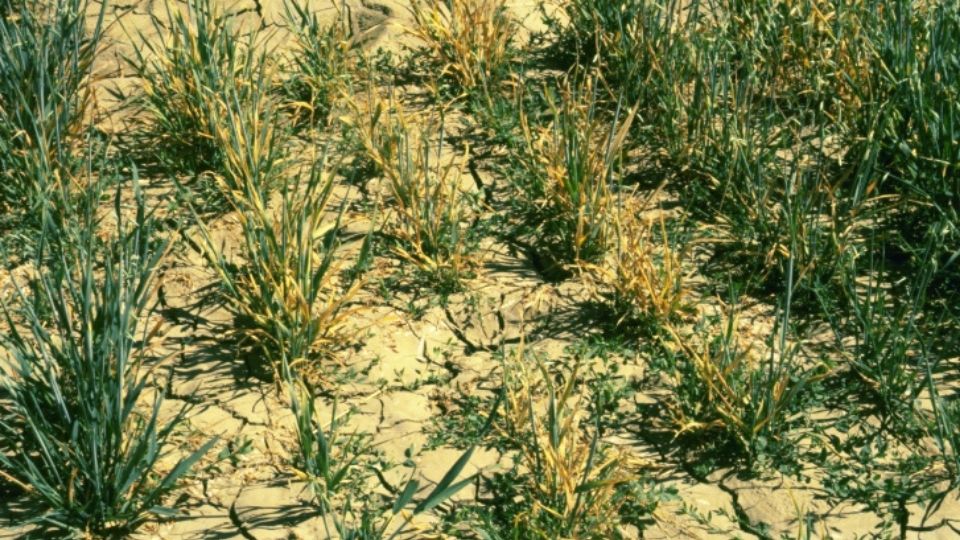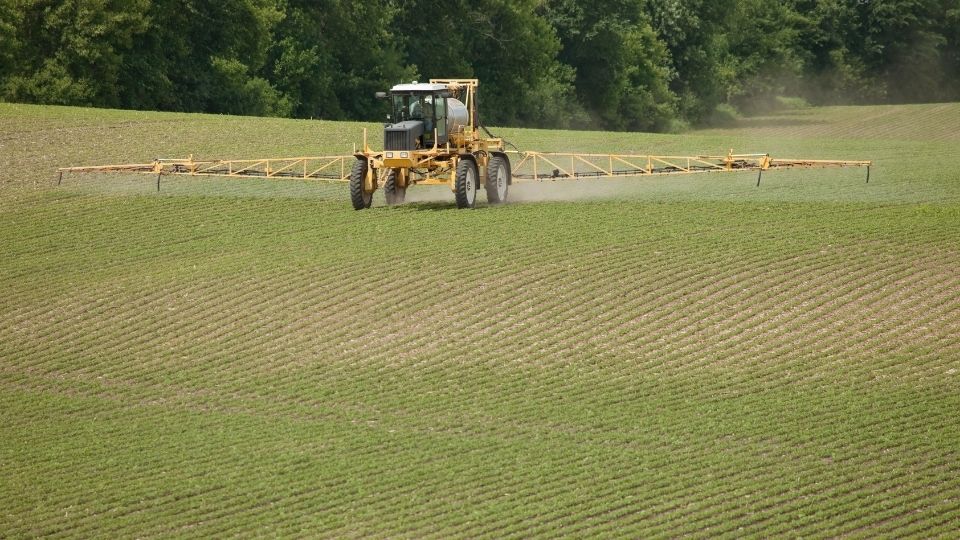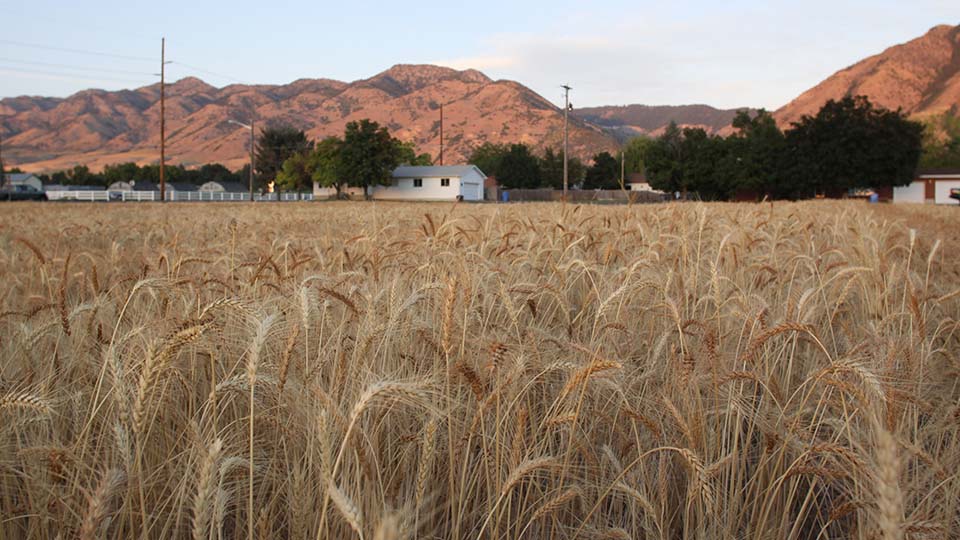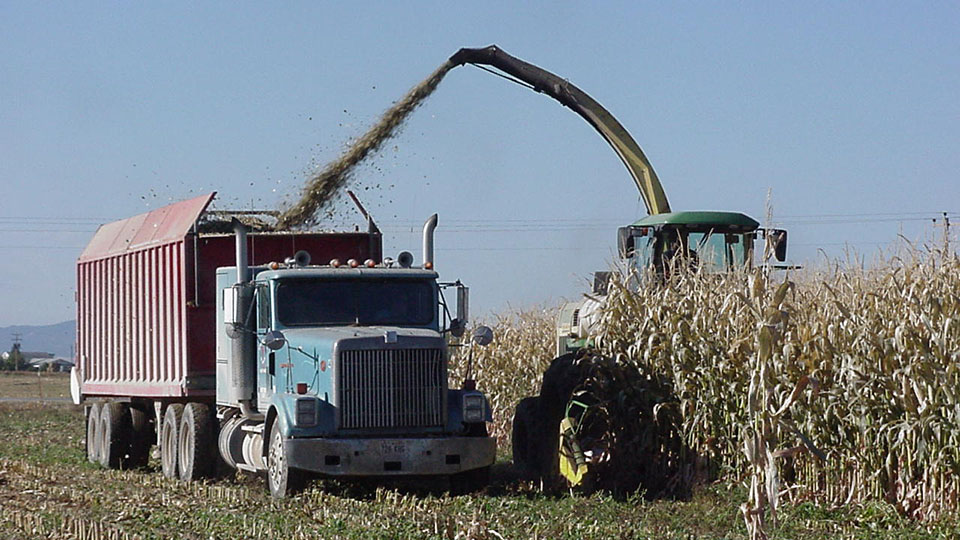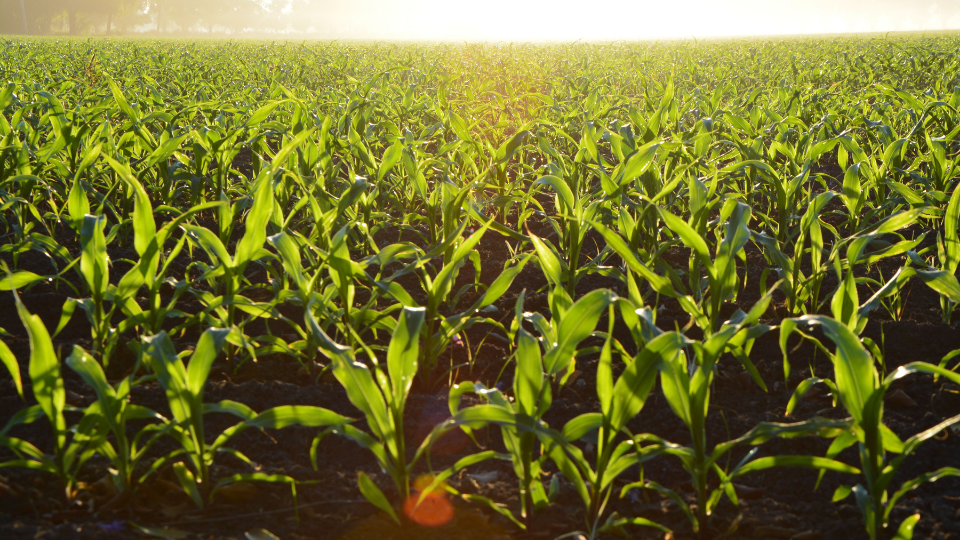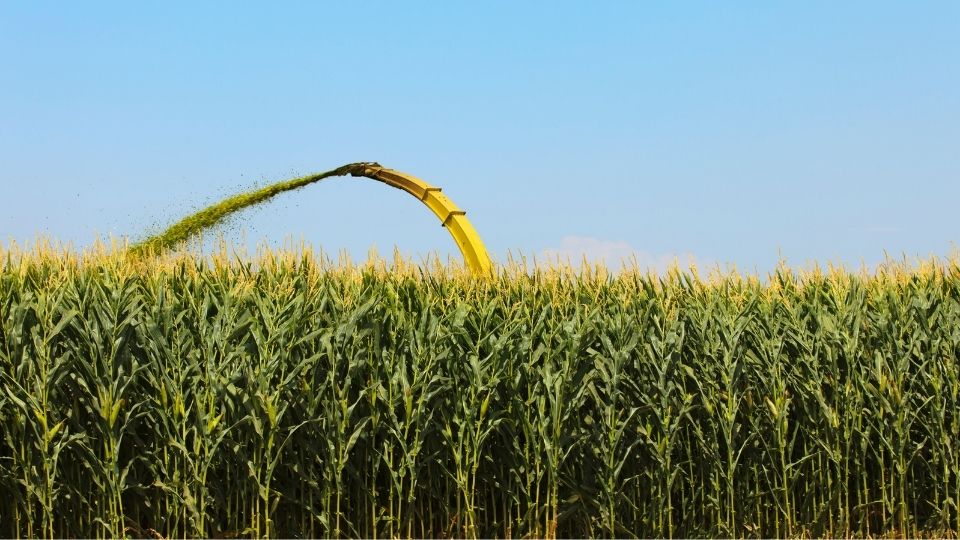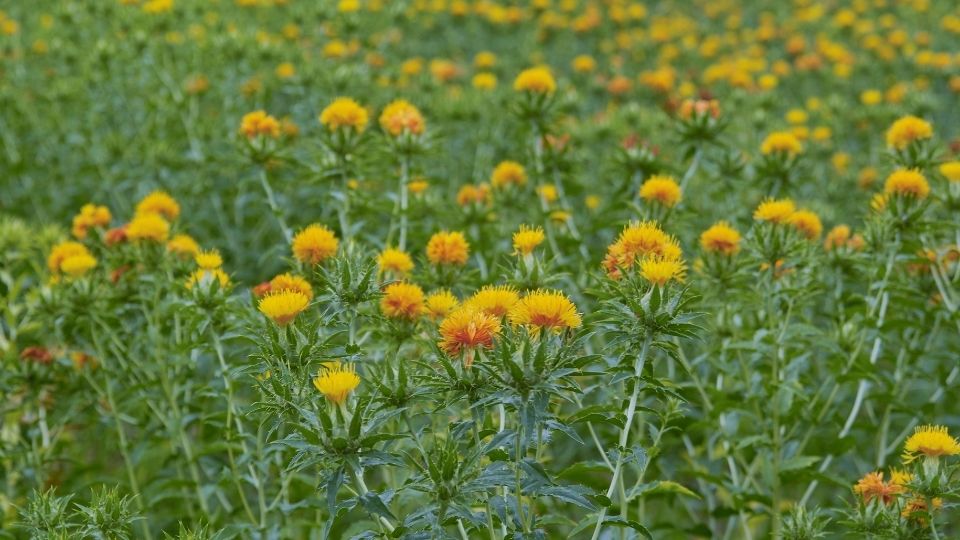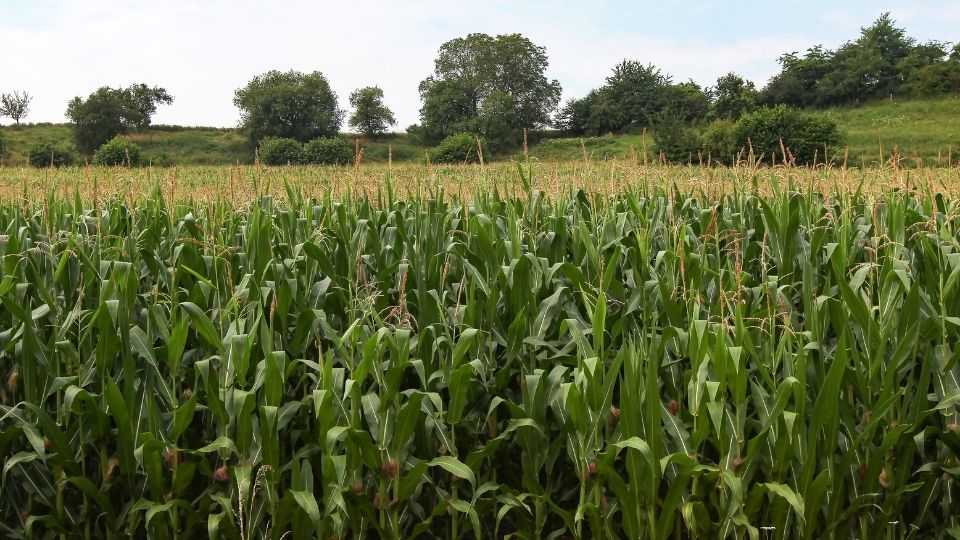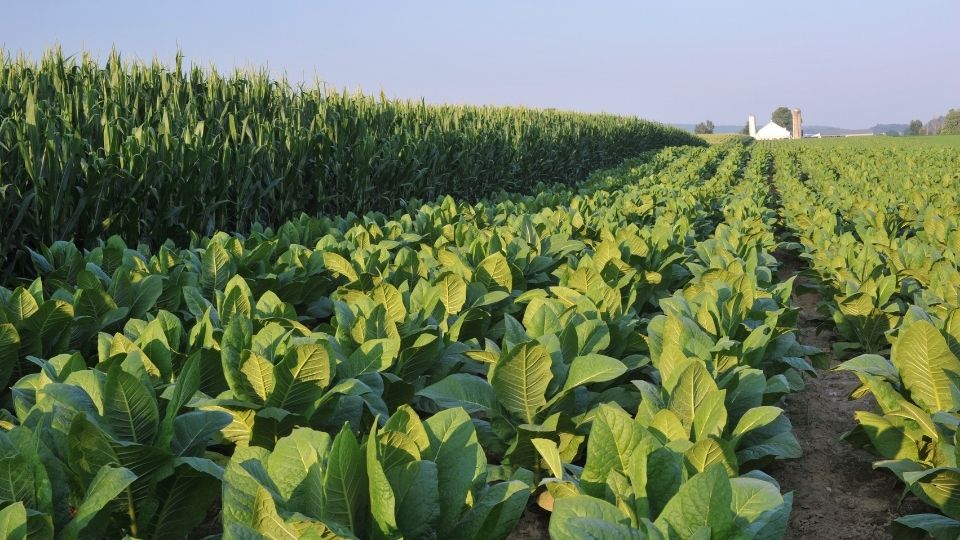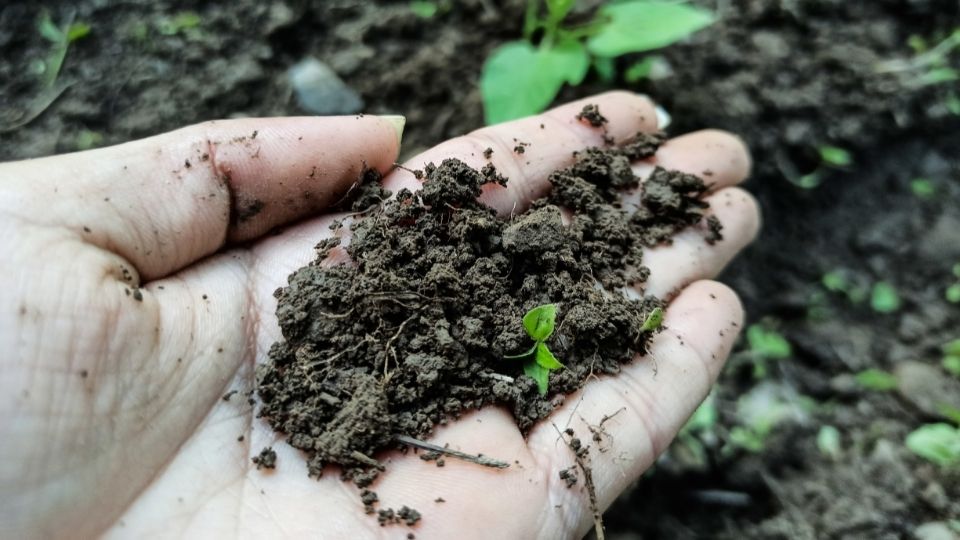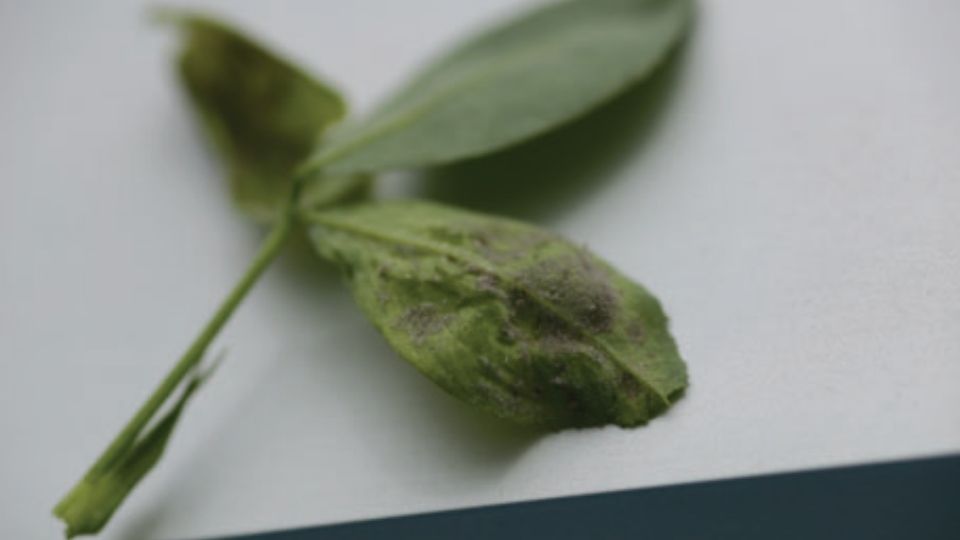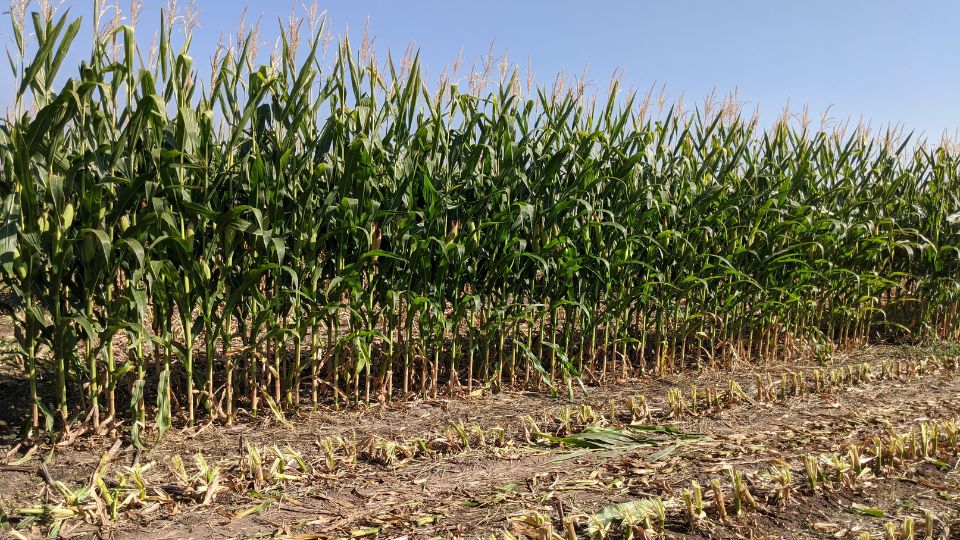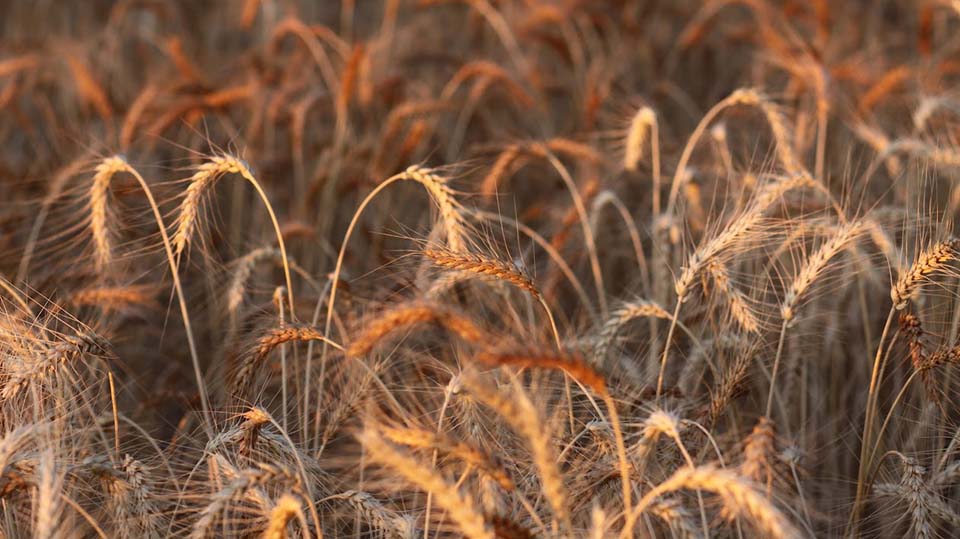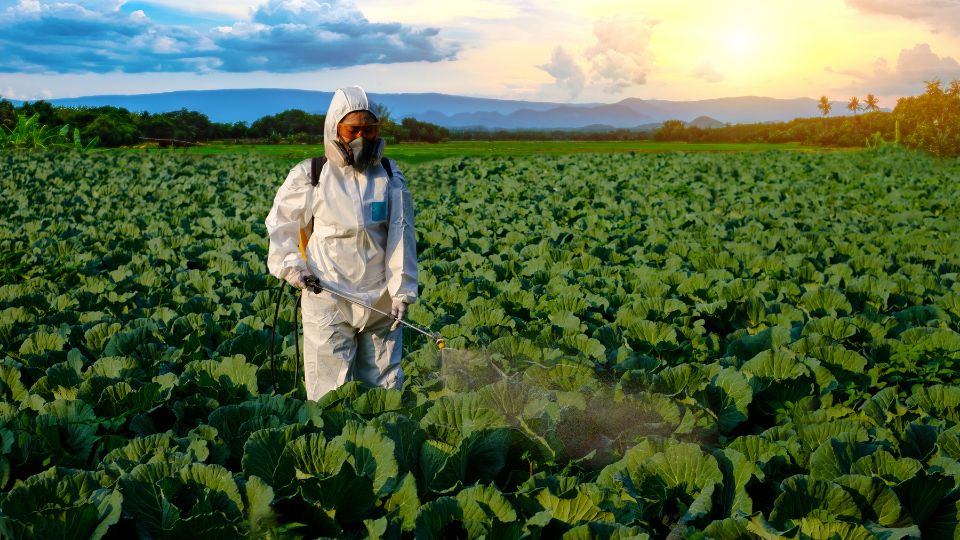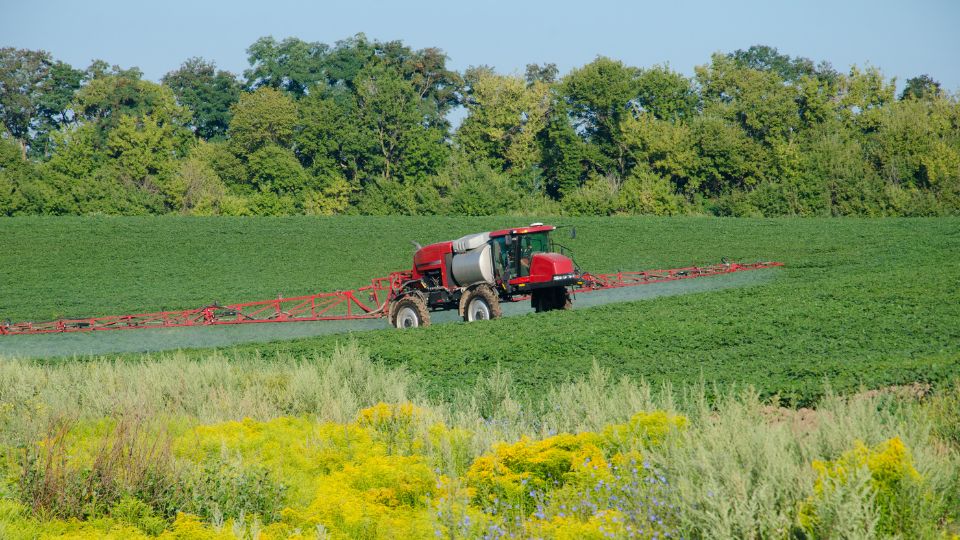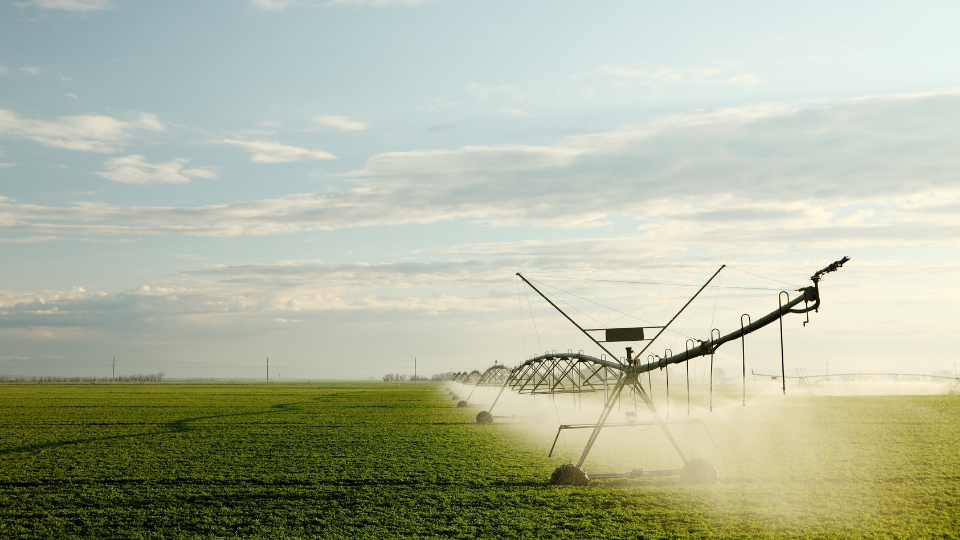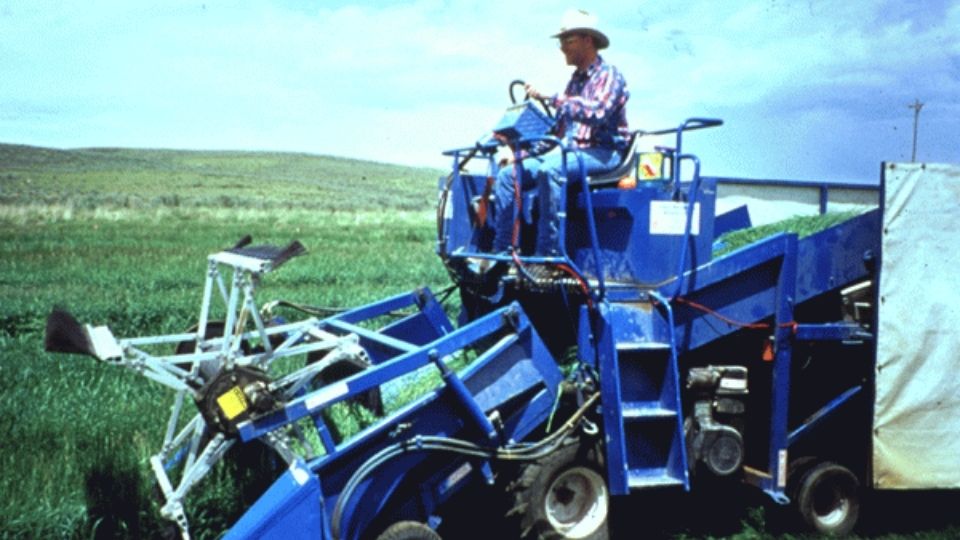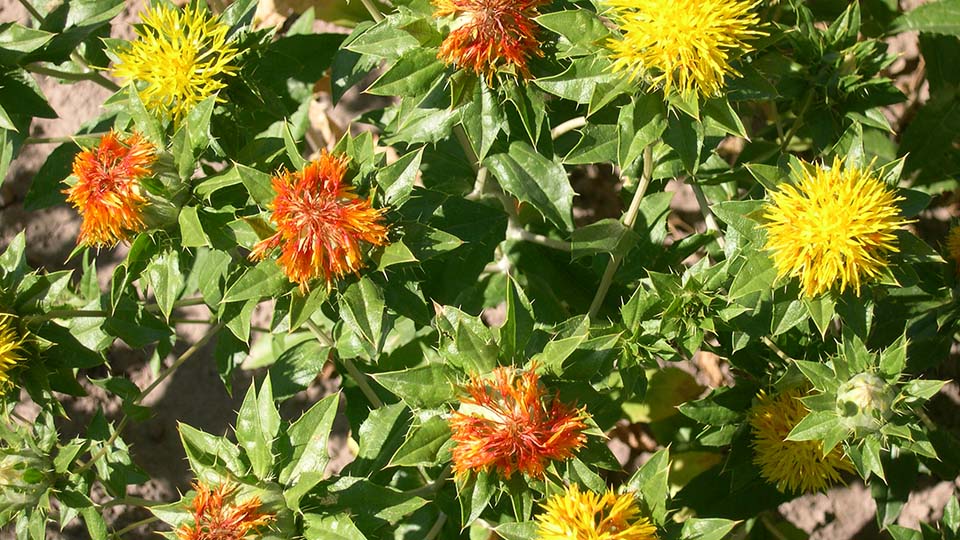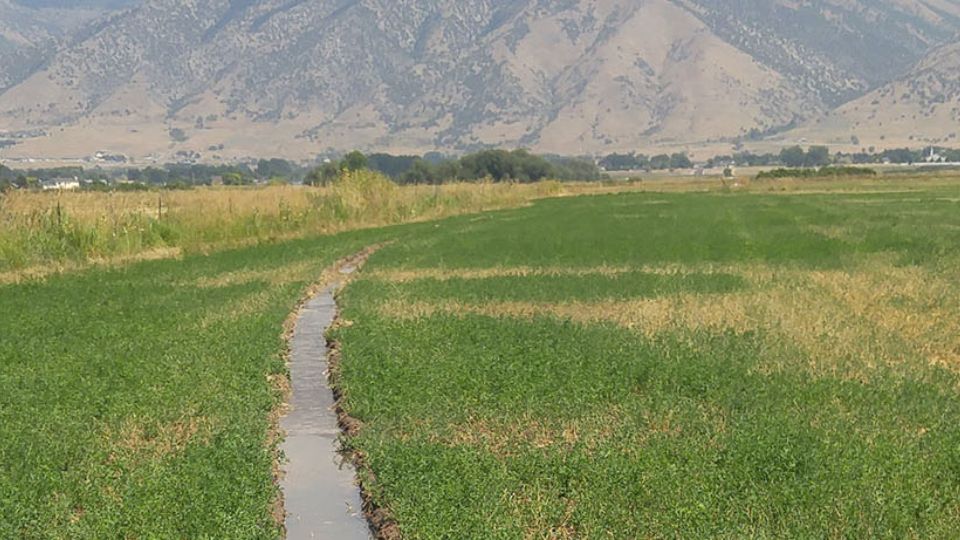Nitrogen Fertilizer Guide for First-Year
Small Grains Following Alfalfa
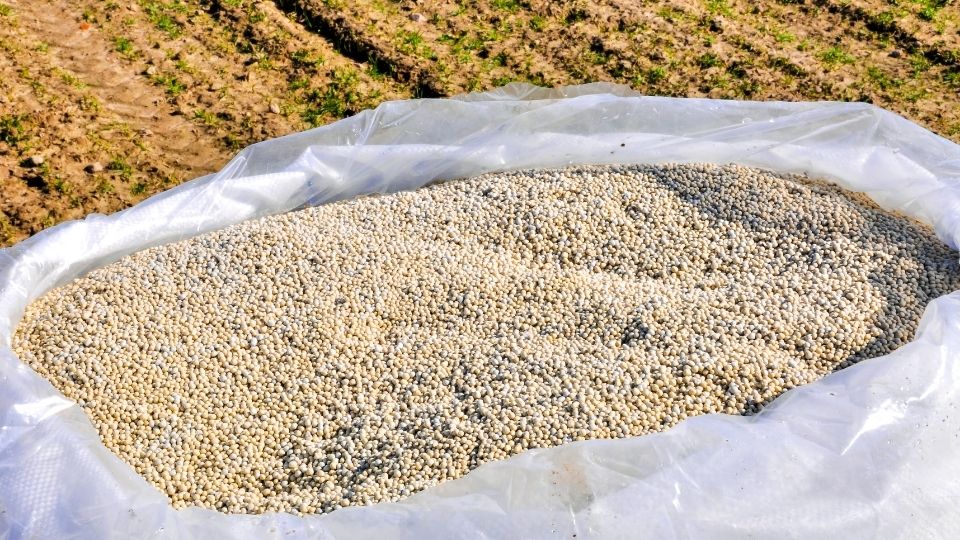
Nitrogen (N) fertilizer is one of the most expensive crop inputs. It is an essential nutrient for most crops and often increases yield more than any other nutrient. Small grains are no exception. Alfalfa is the dominant crop in Utah in terms of area and gross sales, and as a nitrogen-fixing legume, it does not require nitrogen fertilizer. When terminated, alfalfa usually leaves a lot of nitrogen in the soil for subsequent crops. The amount of nitrogen that it supplies to following crops has been termed the “alfalfa N credit.” In many cases, this credit can be up to 300 lbs. N/acre for the two crops following alfalfa. In fact, previous research in over 30 trials in Utah (Creech et al., 2015; 2019) and in another 60 trials in other states (Yost et al., 2015) has shown that growers can usually produce one and sometimes two years of corn without any nitrogen fertilizer. That can be a savings of up to $100/acre/year (using prices of $0.22 lb./urea at a rate of 450 lbs. urea/acre for corn).

trials during 2018 and 2019.
Much less information exists on the nitrogen contribution of alfalfa to small grains, especially in the Intermountain West. The most recent work on this subject was conducted in California where researchers found that wheat following alfalfa can require no nitrogen, a half rate, or a full rate (Lin et al., 2015). These results were based on data from three sites in 2014 and 2015 following young (2-year-old) alfalfa stands. In order to provide recent and relevant research on this topic to Utah growing conditions, a large team of Extension faculty and growers conducted on-farm research trials at 30 farm fields during 2018 and 2019 (Figure 1). Results from these studies will be discussed below in a question-answer format.
Can alfalfa really provide nitrogen to following crops, and if so, how?
Like nearly all legumes, alfalfa has the ability to “fix” nitrogen. To do this, soil bacteria form a symbiotic relationship with alfalfa roots and result in the formation of nodules. In exchange for food (i.e., carbon) from alfalfa roots, the bacteria convert nitrogen in the atmosphere to forms that alfalfa can use to grow. This is why established alfalfa requires no nitrogen fertilizer to optimize yield. Due to this fixation and other factors, nitrogen availability from the soil is typically enhanced when alfalfa is terminated. Nitrogen from fixation, decomposing alfalfa plants (roots and any herbage), and enhanced soil nitrogen mineralization all combine to provide nitrogen to crops that follow alfalfa termination. This contribution is often referred to as a “nitrogen credit.” For this reason, nitrogen fertilizer can often be reduced or eliminated for one to three years following alfalfa termination.
Should I apply nitrogen fertilizer to small grains grown for forage the first year after alfalfa?
Research on Utah farm fields in 2018-2019 (Table 1) showed that nitrogen fertilizer was needed to economically optimize yield in only 1 of 11 fields (9%) where yield was measured (excluding the Piute site). The one field (Box Elder 2) that responded to fertilizer was small grains following a 10-year-old thin alfalfa stand and it required 60 lbs. N/acre to economically optimize yield. The stand in this field was thinning and the low number of alfalfa plants likely contributed to low residual nitrogen for the small grain crop. However, other fields also had old and thinning stands, but did not require nitrogen fertilizer to optimize forage yield. Thus, other factors besides stand condition and age also contributed to fertilizer response.
Forage quality was measured on 12 fields. In contrast to yield results, nitrogen fertilizer applications did increase forage protein at 11 fields (92%) and relative feed quality (RFQ) at 9 fields (75%). Other forage quality measures such as neutral detergent fiber (NDF), total digestible nutrients (TDN), and relative feed value (RFV) were only impacted by nitrogen fertilizer in one to two fields. The average nitrogen fertilizer rate that optimized protein was 120 lbs. N/acre (ranging from 70 to 150 lbs. N/acre), and the average rate that optimized RFQ was 105 lbs. N/acre (ranging from 50 to 150 lbs. N/acre).
These results indicate that nitrogen should only be applied if forage protein or RFQ will increase your compensation for that forage. However, many small grain forage producers in Utah indicate that they are mainly compensated for yield and not quality, making nitrogen application unwarranted.
Therefore, growers could save about $50 or more per acre on fertilizer unless small grains are grown following old (10-year-old or more), thin alfalfa stands.
Table 1
Small Grain Forage Trials: Site, Soil, Alfalfa, and Small Grain Characteristics of 12 Nitrogen Trials
| empty cell | Soil | empty cell | Alfalfa | Small Grains | ||||
|---|---|---|---|---|---|---|---|---|
| Site | Texture | Organic Matter | Irrigation Type | Stand Age | Stand Condition | Species | Max Forage Yield | Economic Optimum N |
| % | years | tons/acre | lbs N/acre | |||||
| Box Elder 1 | Fine sandy loam | 1.4 | Flood | 4 | Good | Wheat | 5.8 | 0 |
| Box Elder 2 | Silt loam | 1.8 | Flood | 10 | Fair | Triticale | 6.6 | 60 |
| Carbon | Loam | 2.1 | Wheel-line | 11 | Poor | Oats | 3.0 | 0 |
| Iron | Loam | 1.9 | Wheel-line | 6 | Poor | Wheat, triticale | 4.2 | 0 |
| Kane 1 | Loam | 3.9 | Wheel-line | 5 | Poor | Wheat, barley, triticale | 2.8 | 0 |
| Kane 2 | Loam | 2.9 | Wheel-line | 9 | Fair | Oats | 2.7 | 0 |
| Millard | Loam | 2.2 | Pivot | 6 | Poor | Wheat, barley, oats | 3.1 | 0 |
| Piute | Fine sandy loam | 2.4 | Flood | 15 | Poor | Oats, barley, rye | - | - |
| Sevier 1 | Silt loam | 1.9 | Pivot | 5 | Good | Oats, barley, wheat | 3.0 | 0 |
| Sevier 2 | Silt loam | 1.3 | Pivot | 6 | Good | Wheat, triticale | 3.8 | 0 |
| Sevier 3 | Silt loam | 2.8 | Pivot | 4 | Good | Triticale | 3.8 | 0 |
| Uintah | Clay loam | 2.2 | Wheel-line | 2 | Good | Barley | 3.5 | 0 |
Should I apply nitrogen fertilizer to small grains grown for grain the first year after alfalfa?
Research on 18 Utah farm fields in 2018-2019 (Table 2) showed that more than half (56% or 10 fields) needed nitrogen fertilizer to increase grain yield. This response was much more frequent than small grains grown for forage. The 10 fields that responded were various small grain species following both young and old alfalfa stands, terminated at various times and in various ways, and irrigated with different methods. The 10 fields required an average of 100 lbs. N/acre (ranging from 75-150 lbs. N/acre) to economically optimize grain yield.
Grain test weight and protein also increased at many sites. At six fields, the grain test weight increased from an average of 60 up to 60.7 lbs. per bushel. Across 15 fields, grain protein increased from an average of 11.6 to 14%, and the average fertilizer rate that maximized protein was 130 lbs. N/acre (ranging from 90-150 lbs. N/acre).
These results indicate that between 75 to 150 lbs. of nitrogen fertilizer will often be needed per acre to optimize grain yield and protein for small grains grown for grain the first year after alfalfa.
It is important to note that several fields still did not require any nitrogen fertilizer to maximize yield or protein. This indicates that nitrogen fertilizer may only be required about one-half of the time, and that using diagnostic tools to predict the nitrogen response could save a lot of money.
| empty cell | Soil | empty cell | Alfalfa | Small Grains | ||||
|---|---|---|---|---|---|---|---|---|
| Site | Texture | Organic Matter | Irrigation Type | Stand Age | Stand Condition | Species | Max Grain Yield | Economic Optimum N |
| % | years | bu/acre | lbs N/acre | |||||
| Beaver 1 | Loam | 3.3 | Pivot | 8 | Good | Soft white | 135 | 150 |
| Beaver 2 | Silty clay loam | 3.7 | Pivot | 7 | Good | Soft white | 165 | 0 |
| Box Elder 3 | Loam | 3.4 | Wheel-line | 8 | Fair | Barley | 102 | 0 |
| Box Elder 4 | Fine sandy loam | 1.4 | Flood | 4 | Good | Soft white | 110 | 0 |
| Box Elder 5 | Silt loam | 1.8 | Flood | 10 | Poor | Triticale | 88 | 0 |
| Box Elder 6 | Fine sandy loam | 1.2 | Flood | 5 | Poor | Soft white | 180 | 104 |
| Box Elder 7 | Silty clay loam | 2.4 | Flood | 6 | Poor | Soft white | 174 | 109 |
| Cache 1 | Fine sandy loam | 1.7 | Wheel-line | 5 | Poor | Soft white | 147 | 0 |
| Cache 2 | Silty clay loam | 2.9 | Pivot | 5 | Poor | Barley | 158 | 0 |
| Cache 3 | Loamy fine sand | 0.8 | Wheel-line | 6 | Fair | Soft white | 180 | 85 |
| Cache 4 | Loamy fine sand | 0.9 | Wheel-line | 5 | Good | Soft white | 164 | 111 |
| Cache 5 | Loamy fine sand | 1.1 | Wheel-line | 11 | Poor | Soft white | 185 | 111 |
| Cache 6 | Silt loam | 2.7 | Wheel-line | 3 | Good | Soft white | 186 | 74 |
| Cache 7 | Silt loam | 2.8 | Wheel-line | 2 | Fair | Soft white | 179 | 93 |
| Franklin | Silty clay loam | 4.5 | Wheel-line | 7 | Poor | Soft white | 131 | 89 |
| Montezuma | Loam | 2.3 | Wheel-line | 9 | Poor | Hard red | 48 | 0 |
| Uintah | Clay loam | 2.3 | Wheel-line | 2 | Good | Barley | 125 | 0 |
| Weber | Fine sandy loam | 1.8 | Flood | 5 | Poor | Soft white | 140 | 97 |
Can response to nitrogen be predicted?
To evaluate whether we can predict nitrogen response, we collected soil samples in the top 1 foot of soil in the early spring right before nitrogen application. Soil nitrate was measured on these samples to see if nitrate levels could distinguish fields that would (low nitrate < 21 ppm) or would not (high nitrate > 21 ppm) need nitrogen fertilizer. We also created an index that used soil nitrate concentration in the top 1 foot of soil (ppm) multiplied by alfalfa stand age at termination (years).
Small grain forage
The yield response to nitrogen could only be predicted for 45% of the fields using soil nitrate concentrations. However, spring soil nitrate could predict forage protein improvements for 67% of the fields. The index with stand age and soil nitrate did not improve predictions. This was likely because few fields needed nitrogen fertilizer to increase yield.
Grain
Grain yield response to fertilizer was correctly predicted with soil nitrate at 53% of the fields (Figure 2). When stand age was considered with soil nitrate, the predictions for yield improved greatly with 15 of 17 fields (88%) accurately predicted (Figure 3). This high accuracy indicates that this may be an effective way to determine whether to apply nitrogen.
Grain protein was much better with 82% of the fields correctly classified using soil nitrate concentration alone. This was better than the prediction for small grains grown for forage.
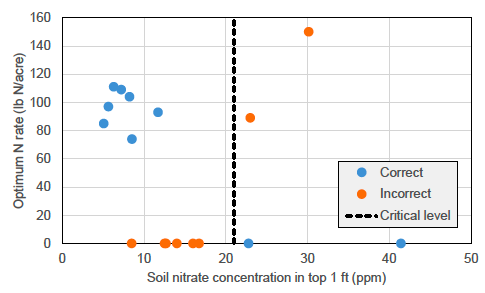
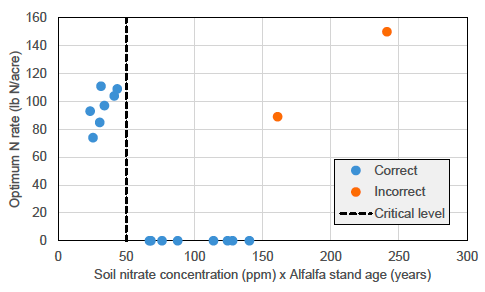
Does fall nitrogen pay for winter small grains following alfalfa?
Fall nitrogen applications of 30 lbs. N/acre provided no additional grain yield beyond spring applications in all 10 fields where it was tested in Utah in 2018-2019. Thus, delaying nitrogen applications (if needed) from split applications in the fall/spring to single applications in the spring could save time and money required for multiple applications.
Does late nitrogen pay at the flag leaf stage?
When small grains were grown for grain following alfalfa, late nitrogen applications at the flag leaf stage provided no benefit to yield (beyond the same rate applied in the spring) at the 12 fields where it was tested. However, late applications of 60 lbs. N/acre did increase protein levels at 5 of the 12 fields by an average of 1.7% points (from 12.5 to 14.2% protein) above the same amount of nitrogen applied solely at planting. These results indicate that late nitrogen will sometimes boost protein levels, but only when extra nitrogen is needed. Split application would also double application costs and should only be applied when the incentive for protein (if it exists) outweighs the additional cost.
Take-Home Points
Small grains harvested as forage in the first year following alfalfa
Research on several Utah fields indicates that growers do not need to apply nitrogen fertilizer, unless they are following an old alfalfa stand (10 years or greater). In these cases, about 60 lbs N/acre should optimize yield. If growers are hesitant to withhold nitrogen fertilizer, they could apply test strips where they withhold nitrogen and watch for major height or color differences as an indicator of whether to apply N. Be aware that the leaf color approach is risky as color differences can be misleading and may appear late, making rescue N applications difficult. These prediction tools are not perfect and may not be necessary as no nitrogen fertilizer will be needed in most cases.
Small grains harvested as grain in the first year following alfalfa
When nitrogen fertilizer was needed, 75 up to 150 lbs. N/acre usually optimized grain yield and protein. However, nitrogen fertilizer was not needed in about half of the cases. Measuring soil nitrate in the top 1 foot of soil (see soil sampling procedures and costs at: https://usual.usu.edu/) in the early spring in combination with the age of the alfalfa at termination was the best predictor of whether fertilizer would be required. If soil nitrate multiplied by stand age is at or above 50, withholding fertilizer should optimize grain yield and protein. Thus, a small investment in soil testing ($15-30/field at minimum) could save $50/acre or more in fertilizer costs for this rotation.
References
- Creech, E., Cardon, G., & Barnhill, J. et al. (2015). The potential of reducing N fertilizer inputs for corn production in the first year following alfalfa. (All Current Publications, Paper 761). Utah State University Extension. https://digitalcommons.usu.edu/extension_curall/761/.
- Creech, E., Yost, M., Cardon, G., Ransom, C., & Clark, J. (2020). Considerations for crop rotation from alfalfa to corn. (All Current Publications, Paper 2100.) Utah State University Extension. https://digitalcommons.usu.edu/extension_curall/2100
- Lin, E., Putnam, D., Pettygrove, S., Lundy, M., Orloff, S., & Wright, S. (2015). Alfalfa contributes more nitrogen to following crop than previously thought. Paper presented at the Western Nutrient Management Conference, Vol.11. Reno, NV. https://alfalfa.ucdavis.edu/+symposium/2015/PDFfiles/Lin%20Eric.pdf
- Yost, M., J. Coulter, J., & Russelle, M. (2015). Managing the rotation from alfalfa to corn. University of Minnesota Extension. https://conservancy.umn.edu/bitstream/handle/11299/198689/managing-rotation-from-alfalfa-to-corn.pdf?sequence=1
Published July 2020
Utah State University Extension
Peer-reviewed fact sheet
Authors
Matt Yost, Ph.D., Collin Pound, Earl Creech, Ph.D., Grant Cardon, Ph.D., Jody Gale, Mike Pace, Boyd Kitchen, Ph.D., Steve Price, Kevin Heaton, Mark Nelson, Trent Wilde, and Katie Russell, Ph.D.
Related Research












